Photo: WireImage.com
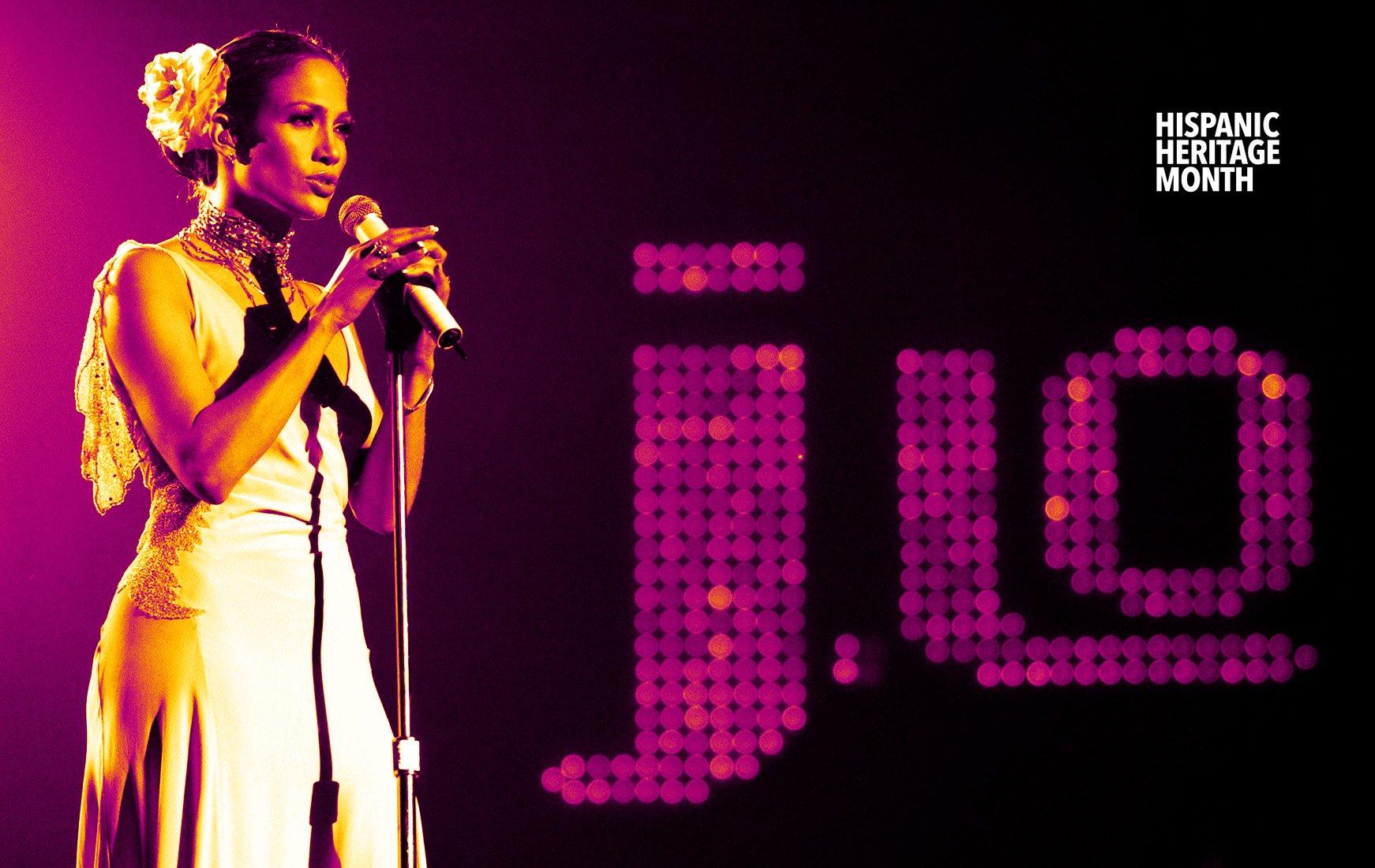
Jennifer Lopez
feature
1999: The Year Latin Pop Conquered America
1999 saw an unprecedented dominance of Latin pop sounds in American music, opening the public's ears to multilingual songwriting
The U.S. music scene in 1999 saw an unprecedented surge in the popularity of Latin pop.
Hispanic artists and various elements of Latin sounds dominated the charts to such an extent that by the end of the year even artists with no Latin heritage to speak of were looking to capitalize on the movement by recording Spanish-language versions of their singles in hopes of activating the crossover market.
Sure, there were prior Latin crossover rumblings — remember Dru's Hill's 1998 Latin-inflected Top 3 hit "How Deep Is Your Love" from Rush Hour? But most argue that it all started with Ricky Martin.
Ricky Martin
<iframe width="560" height="315" src="https://www.youtube.com/embed/p47fEXGabaY" frameborder="0" allowfullscreen></iframe>
"It was completely sudden, and it had a lot to do with Ricky. After his performance at the GRAMMYs, everyone was on alert, so to speak, and expecting his new album. The first hit, of course, was "Livin' La Vida Loca" with that sensational video. I think that was the beginning." — Leila Cobo, executive director of Latin content and programming, Billboard
As a young man, Martin came to prominence between the ages of 12 and 17 as a member of the GRAMMY-nominated boy band Menudo. The Puerto Rico native was also a successful actor and solo recording artist before he burst onto the U.S. music scene in 1999. In the '90s, he acted in TV series such as "General Hospital" and "Getting By," telenovelas and stage plays, and he'd released four successful Spanish-language albums.
Martin won his first career GRAMMY — Best Latin Pop Performance for Vuelve — at the 41st GRAMMY Awards in 1999, but it was his show-stopping performance of "La Copa De La Vida" that same year that made it clear something big was on the horizon.
Martin's "Livin La Vida Loca" was released one month after his spectacular GRAMMY performance, and quickly became his first-ever No. 1 charting single, holding the top spot on the Billboard Hot 100 for five consecutive weeks.
The singer's self-titled fifth solo album — his English debut — was released two months later, and hit No. 1 on the Billboard 200 almost immediately. The most successful album of Martin's career, it has gone on to sell well over 15 million copies worldwide. Needless to say, 1999 was a big year for the Puerto Rican pop star.
Leila Cobo, executive director of Latin content and programming for Billboard, was working as Miami Herald's pop music critic at the time, recalls one event that served as an interesting tell sign.
"I went to cover [the signing] and found a line of hysterical girls at 11 a.m. on a school day that went on for blocks," she says. "I had never seen anything like this, ever."
Writing for Billboard roughly a month after "Livin La Vida Loca" hit store shelves, Michael Paoletta, now executive producer, A&R and music supervision for Comma Music, commented prophetically, "In the weeks since [the GRAMMYs], it seems like every record label exec has been in a heated search for the next Latin hottie."
Jennifer Lopez
<iframe width="560" height="315" src="https://www.youtube.com/embed/lYfkl-HXfuU" frameborder="0" allowfullscreen></iframe>
Jennifer Lopez had worked as a successful dancer and actress during the '90s, notably appearing as a Fly Girl on Keenan and Damon Wayans' sketch comedy and variety show "In Living Color." In 1997 Lopez earned a huge breakthrough in the leading role as GRAMMY-winning Tejano singer Selena in the titular biopic about her life and tragic death. The Bronx native's performance in the film was lauded by critics and fans alike, putting her in the entertainment spotlight and at the same time making her ripe to become the breakout female star to help propel the Latin pop movement.
Lopez's debut single, "If You Had My Love," was released in May 1999, just a week before Martin's self-titled album hit the shelves, arriving at the perfect time to sate the appetites of stateside listeners. The single climbed to the top of the Billboard Hot 100 and became one of the best-selling singles in the U.S. for 1999. Lopez's first studio album, On The 6, released a few weeks later, also skyrocketed, debuting at No. 8 on the Billboard 200 and ultimately earning triple-platinum status.
"Waiting For Tonight," the second radio single from On The 6, would go on to be nominated for Best Dance Recording at the 42nd GRAMMY Awards.
J.Lo, Pharrell Williams, Lady Gaga: 13 Iconic GRAMMY Fashion Statements
The same month that saw Lopez release On The 6 also saw another well-established Latin pop star blow up in the U.S.
Enrique Iglesias
<iframe width="560" height="315" src="https://www.youtube.com/embed/KboCLgKIhTk" frameborder="0" allowfullscreen></iframe>
Enrique Iglesias had previously won his first GRAMMY for Best Latin Pop Performance for his first self-titled 1995 studio album. The Spanish singer also came from an impressive musical pedigree, being the son of GRAMMY-winning Latin pop crooner Julio Iglesias.
"Bailamos," the junior Iglesias' inaugural English language release, was selected for the 1999 blockbuster action flick Wild Wild West, thanks in part to a request from GRAMMY winner Will Smith. The single would top the Billboard Hot 100 and become an immense success, eventually selling more than 5 million copies worldwide.
Almost certainly the biggest success story of the 1999 Latin pop explosion, however, was to be the eponymous band led by then-52-year-old guitar god Carlos Santana.
Santana
<iframe width="560" height="315" src="https://www.youtube.com/embed/6Whgn_iE5uc" frameborder="0" allowfullscreen></iframe>
"We connected with hip-hoppers. … We connected with middle white America, we connected with Latin America, Africa, Asia, Australia. It's like the Champs-Elysées in Paris: This CD is connected to all the streets." — Carlos Santana on Supernatural, 1999
When Santana's 17th studio album, Supernatural, was released in 1999, the group had been playing live together for longer than the likes of Martin, Lopez and Iglesias had been alive. The album's lead single, "Smooth," featuring Matchbox 20's Rob Thomas, was an absolute phenomenon that year. It spent an astonishing 12 weeks in the No. 1 spot on the Billboard Hot 100, marking Santana's first chart-topping song.
Supernatural would net Santana a total of eight GRAMMYs at the 42nd GRAMMY Awards, including Album Of The Year and Best Rock Album, with "Smooth" taking home Record Of The Year, Song Of The Year and Best Pop Collaboration With Vocals. Commercially, Supernatural would eventually sell more than 30 million copies worldwide, making it one of the best-selling albums of all time. Due to its equally strong chart performance, "Smooth" would be the final song of the decade to stand atop the Hot 100.
The Latin GRAMMY Awards
<iframe width="560" height="315" src="https://www.youtube.com/embed/fLVzw9wVd9o" frameborder="0" allowfullscreen></iframe>
Following the incredible explosion of Latin pop music in 1999, the year 2000 heralded the inception of the Latin GRAMMY Awards, hosted by the Latin Recording Academy, which was established in 1997 as a counterpart to the Recording Academy.
Nuyorican Marc Anthony would become the first artist to take home the inaugural Latin GRAMMY for Song Of The Year, Record Of The Year and Best Male Pop Vocal Performance for "I Need To Know (Dímelo)," from his Top 10 1999 self-titled album.
While some later argued that the 1999 Latin explosion was a brief high-gloss blip on the pop culture radar, its impact cannot be underestimated. The 2000s and beyond have seen a steady stream of Latin artists dent the Billboard charts — including Shakira, Juanes, Luis Fonsi, J Balvin, and Nicky Jam, among others. The past year has seen the continuing dominance of Latin sounds in the modern pop scene, with crossover hits such as Fonsi and Daddy Yankee's "Despacito" serving as but one example.
And the Latin GRAMMY Awards has emerged as The Biggest Night in Latin Music, honoring top Latin music talent and featuring top-shelf performances that thrill millions worldwide — a testament to the staying power of Latin music.
"To have a song in Spanish, and to be in the top of the Hot 100, that's something that rarely happens," Fonsi told CNN regarding "Despacito." "I'm just very proud that Latin music has grown so much and people are just really connecting to it."

Photo: Getty Images/John Atashian
feature
On This Day In Music: Woodstock '94 Begins In Upstate New York
Held 30 years ago Aug. 12-14, Woodstock '94 featured an eclectic (and muddy) lineup that launched Nine Inch Nails, Green Day and others into the limelight.
Woodstock '94 is no middle child music festival. While not as groundbreaking as Woodstock '69 or as infamous as Woodstock '99, Woodstock '94 boasts a unique legacy that deserves recognition.
Held Aug. 12-14 in the Hudson Valley town of Saugerties, New York, Woodstock '94 was set to commemorate the silver anniversary of the original Woodstock festival in 1969. Nodding to its origins in '69, Woodstock '94 was billed as "2 More Days of Peace and Music" (a third day of the festival was eventually added).
Woodstock '94 featured a wide range of acts that both reflected the nostalgia of Woodstock '69 and highlighted a myriad of new groups. Original Woodstock performers such as Crosby, Stills & Nash (minus Neil Young) and Santana topped the bill, and now-household names including Green Day and Red Hot Chili Peppers performed some of their earliest festival sets.
Even Bob Dylan, who initially declined an appearance at Woodstock '69 despite living near the festival at the time, had a change of heart and agreed to play at Woodstock '94.
It seemed that everyone wanted to capture a sliver of the magic from the original Woodstock. Although roughly 164,000 tickets were sold, the actual number of attendees exceeded 350,000 (surpassing even Coachella 2024's attendance rates).
Spirits were high as the festival opened on Friday with dry, sunny skies highlighting performances from Sheryl Crow, Collective Soul, and others. By the weekend, the weather took a turn and transformed the festival grounds at Winston Farm in Saugerties into a giant muddy puddle. Although Woodstock '69 was also rainy and mud-filled, the madness that ensued at Woodstock '94 led it to be dubbed "Mudstock."
As Primus performed "My Name Is Mud" on Saturday, festival-goers seized the opportunity to fling the wet dirt at the band on stage.
"Once I started singing the words to "My Name Is Mud," all of a sudden huge chunks of sod started flying my way and it was pretty frightening," Primus' lead singer told Billboard 20 years later. "I still have those [speaker] cabinets to this day, and those cabinets still have mud in them."
With high energy from Friday's acts and some mud-induced chaos, attendees were buzzing with anticipation and excitement for the rest of the weekend. The party atmosphere continued throughout day two — and not solely because Blind Melon lead vocalist Shannon Hoon strolled on stage tripping on acid, wearing his girlfriend's dress.
Aerosmith may have been day two headliners, but Nine Inch Nails' 15-song set remains a highlight of Woodstock '94. The band drew the biggest crowd of the festival, and were catapulted into wider mainstream visibility. Taking advantage of the unpredictable weather, then-bassist Danny Lohner pushed lead vocalist Trent Reznor into the mud, prompting Reznor to retaliate. The other members of the band soon joined in on the fun, strutting onto the stage covered in mud.
Opening with Pretty Hate Machine's "Terrible Lie," NIN turned the massive audience into a giant mosh pit and maintained that high energy until the end of the set. While the band faced technological difficulties onstage, it only seemed to enhance their raw, gritty image.
The set was so celebrated that it is forever memorialized in the Rock & Roll Hall of Fame, with art installations featuring a life-sized mannequin replica of Reznor singing into the microphone and his keyboard, both covered in mud.
By day three, Woodstock '94 was clearly becoming an iconic music festival that would be discussed for years to come. If Saturday's mud-slinging electric performances weren't enough, the final day of the festival featured performances from Green Day, Red Hot Chili Peppers, Bob Dylan, Santana, and others.
When Green Day — fresh off the success of their third studio album Dookie — took the stage, all hell broke loose. While the band was and continues to be known for their rowdy live sets, their performance at Woodstock '94 remains unmatched.
By the time Green Day started performing, the fairgrounds had turned into a full-blown mud fight. The band tried to push through the performance and embrace the chaos, but the set came to an abrupt stop when lead singer Billie Joe Armstrong told the crowd, "Everybody say shut the f— up and we’ll stop playing." When the crowd shouted the phrase back, Armstrong said goodbye on behalf of the band, and the rest of the group fled the stage.
By the end of the performance, lead singer Billie Joe Armstrong had lost his pants and the band had to be escorted out of the festival grounds by a helicopter. On their way off the stage, security confused mud-covered bassist Mike Dirnt for a crazed fan and tackled him, leaving him with five fewer teeth than he started the set with.
"He actually sheared my teeth, and I blew like five teeth. Only one of them died. I fixed the rest of them, but he all sheared up the back of my teeth," Dirnt confessed to The Aquarian in 2013. "It was horrible. But the great thing about it is that I was able to get out of there, and I'd do it again tomorrow if I had to."
Peter Gabriel closed out the weekend by remaining true to the original mission of the festival, offering fans peace filled with good vibes. Gabriel's music, though deeply contrasting with the hard rock and punk acts that dominated the festival, provided a flawless end to the chaos that had unfolded over the past three days.
While the 1994 installment of Woodstock hasn't basked in the same spotlight as its 1969 and 1999 siblings — the latter of which has been the subject of two documentaries in as many years — it remains far from forgotten.
Woodstock '94 stands as one of the legendary music festivals of all time. Although the rain may have soaked the grounds, turning it into a muddy catastrophe, it also nourished the roots of some of the most iconic musical acts and sent them into the mainstream media. The festival was more than just a series of performances, but rather a unique cultural event.
Latest Music Festival News

Get Ready For Fool In Love Fest With This Soulful Playlist: Hits & B-Sides From Chaka Khan, Thee Sacred Souls, Smokey Robinson & More
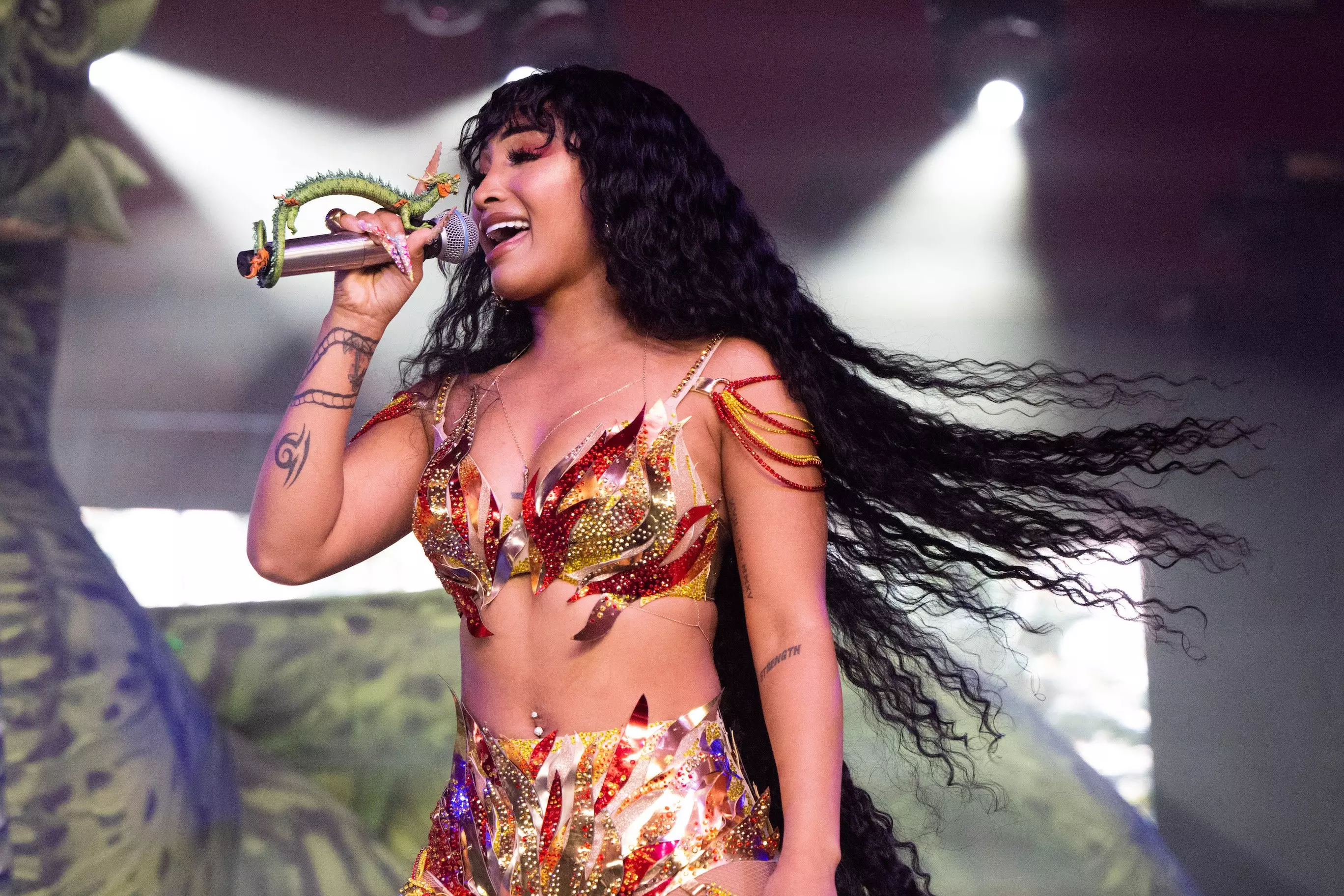
8 Can't-Miss Acts At Afro Nation Detroit 2024: Shenseea, Ayra Starr, Kizz Daniel & More
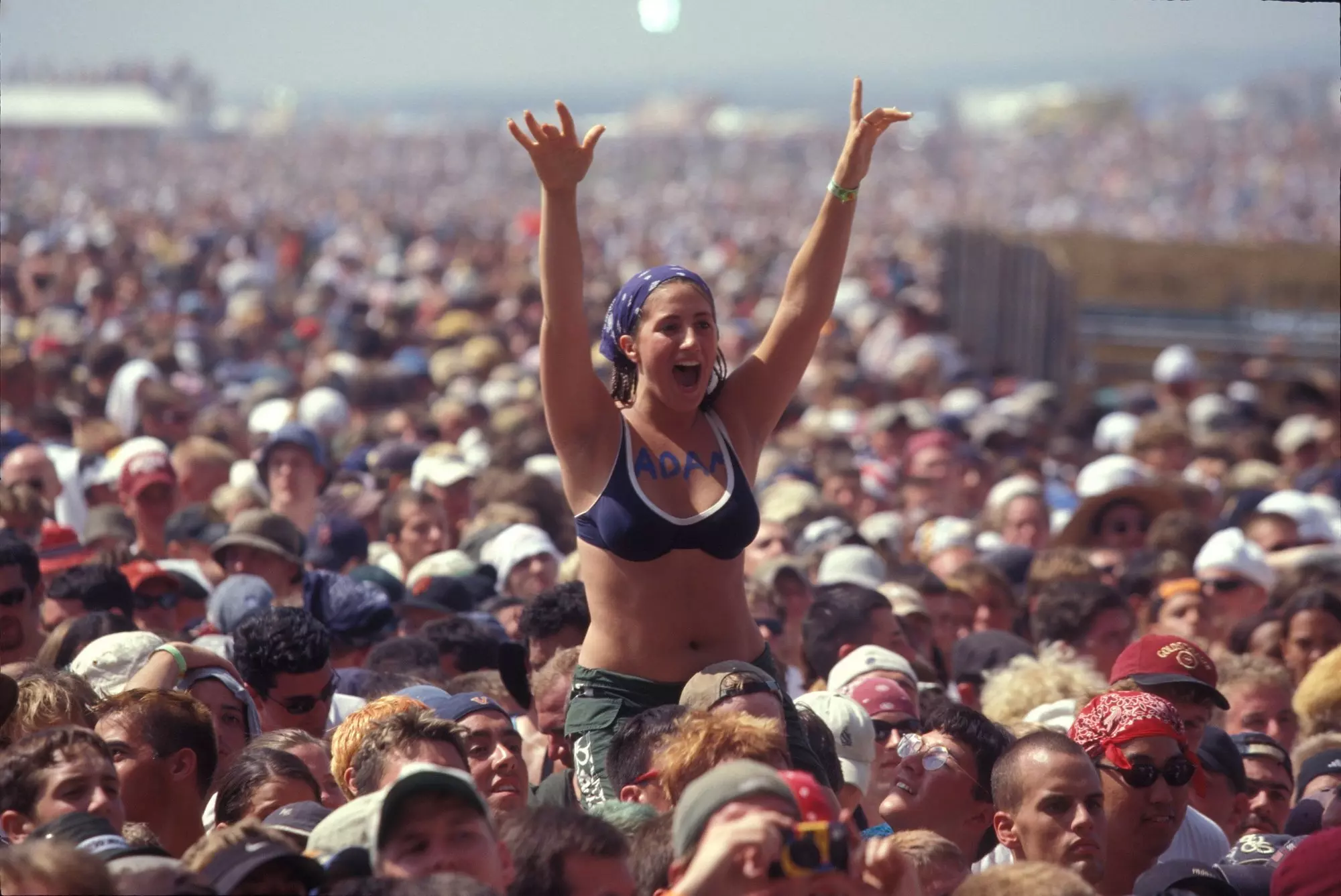
On This Day In Music: Woodstock '94 Begins In Upstate New York
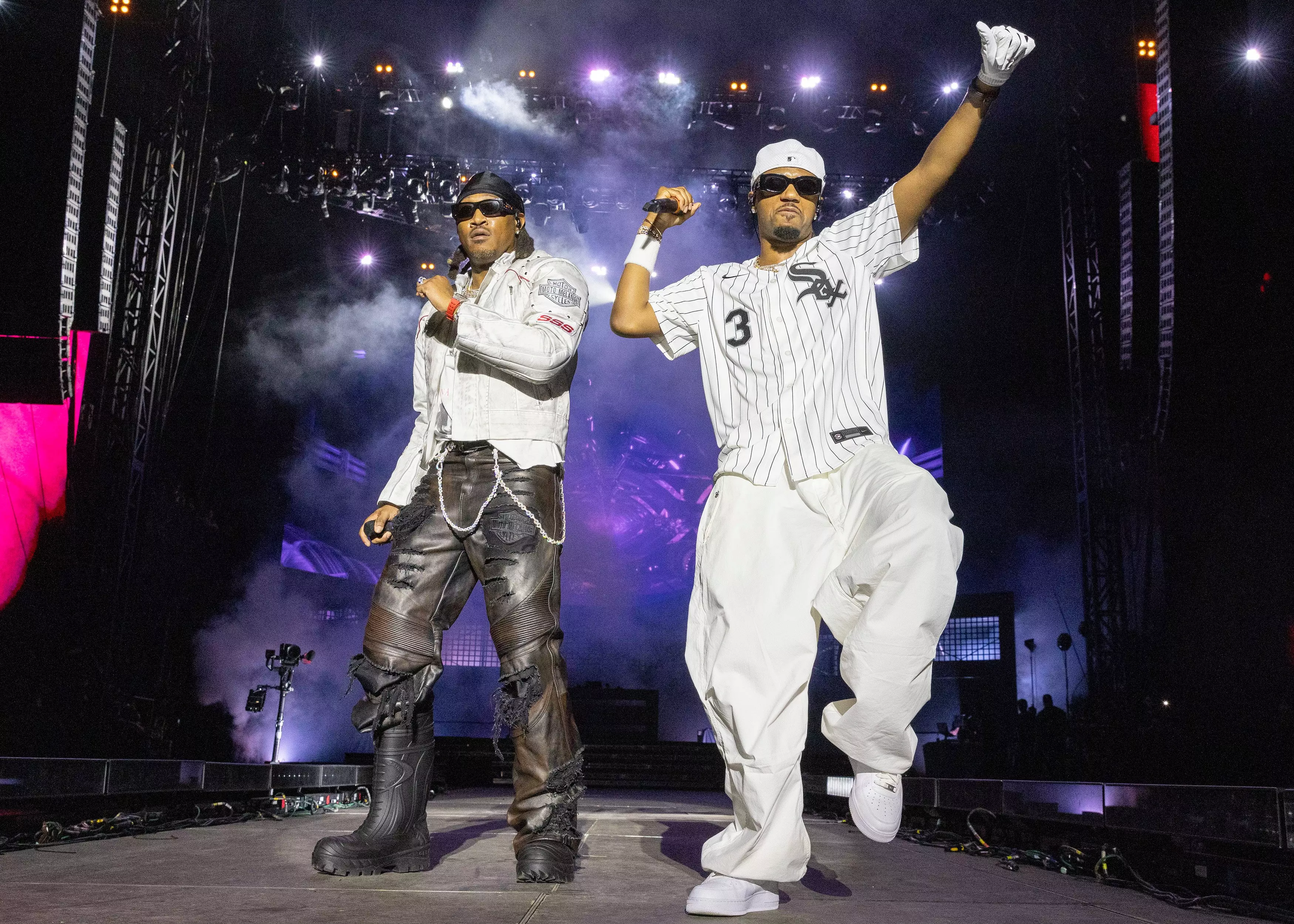
7 Stellar Sets From Lollapalooza 2024: Megan Thee Stallion, Future x Metro Boomin & More

10 Cant-Miss Sets At HARD Summer 2024: Disclosure, Boys Noize, INVT & More
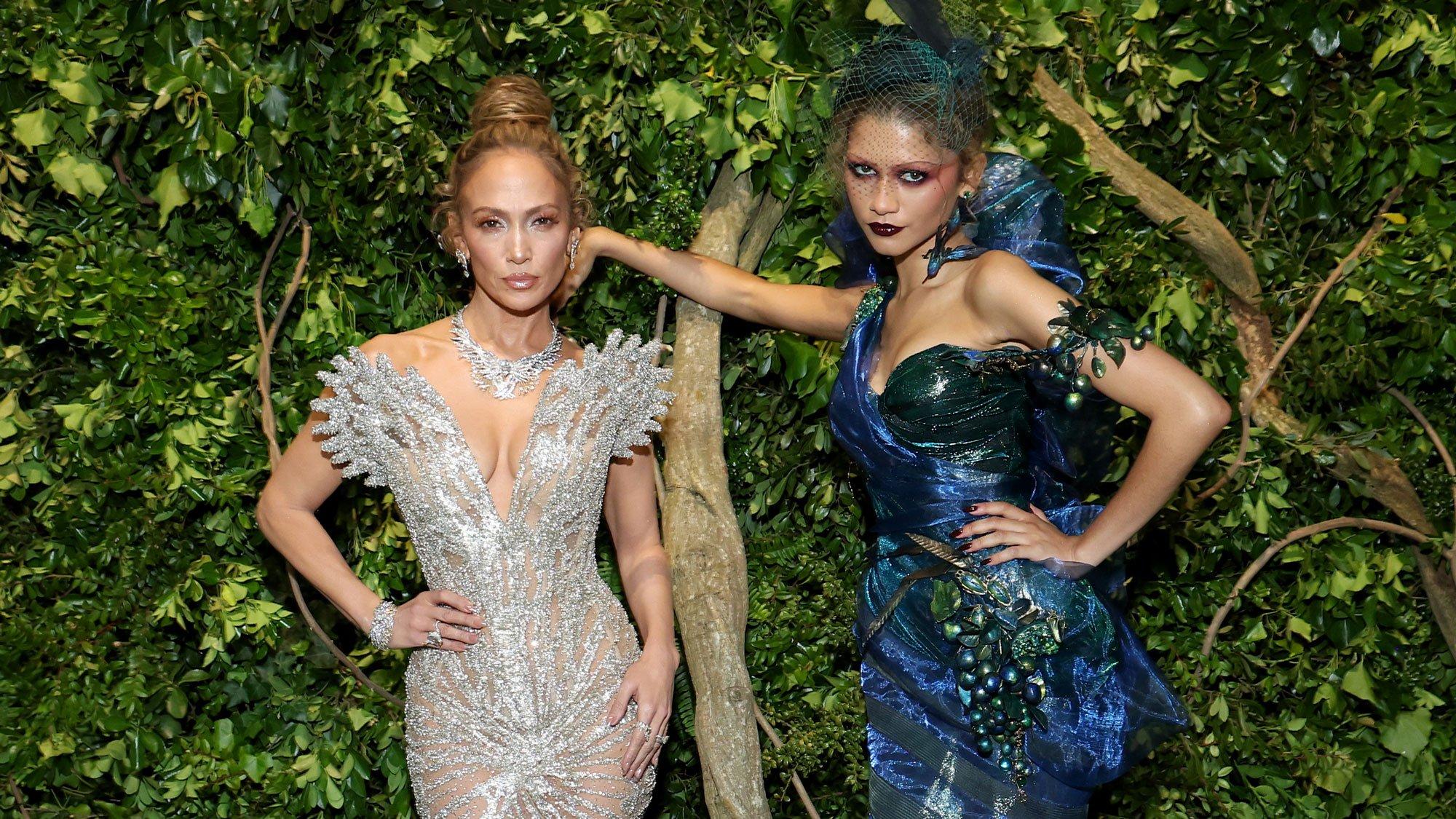
Photo: Kevin Mazur/MG24/Getty Images for The Met Museum/Vogue
list
2024 Met Gala Red Carpet: Music Icons & Celebrities Charm In The "Garden of Time" Including Bad Bunny, Zendaya, Doja Cat & More
From groundbreaking florals to silhouettes in black and piles of tulle, discover all of the spell-binding looks worn by music icons on the Met Gala red carpet in celebration of "Sleeping Beauties: Reawakening Fashion."
This year's Met Gala invited guests to step into the enchanting "Garden of Time" at the Metropolitan Museum of Art in New York City, where fashion meets fantasy. Celebrating the Met's exhibit "Sleeping Beauties: Reawakening Fashion," the first Monday in May saw stars transform the red carpet into a vibrant display of sartorial storytelling. The theme showcased a collection too delicate to wear but alive with the stories of fashion's past.
From co-chairs Zendaya and Bad Bunny to Tyla and Jennifer Lopez, see how music icons and film stars embodied this year's theme with spectacular flair. The gala not only highlighted the sensory and emotional richness of fashion but also set the stage for a night of memorable styles — groundbreaking florals, tiered tulle and all.
Explore the full spectrum of this year's enchanting looks from fashion's grandest night in the showcase below.
Bad Bunny
Jeff Kravitz/FilmMagic/Getty Images
Jennifer Lopez
Photo: Kevin Mazur/MG24/Getty Images for The Met Museum/Vogue
Zendaya
Dimitrios Kambouris/Getty Images for The Met Museum/Vogue
Tyla
Angela Weiss/AFP via Getty Images
Donald Glover
Angela Weiss/AFP via Getty Images
Stray Kids
Photo: Angela Weiss/AFP via Getty Images
Jon Batiste
Angela Weiss/AFP via Getty Images
Queen Latifah
John Shearer/WireImage/Getty Images
Kylie Minogue
Photo: Jamie McCarthy/Getty Images
Christian Cowan and Sam Smith
Photo: Jamie McCarthy/Getty Images
Jack Harlow
Marleen Moise/Getty Images
Teyana Taylor
Jamie McCarthy/Getty Images
Ariana Grande
Kevin Mazur/MG24/Getty Images for The Met Museum/Vogue
Rosalía
Jamie McCarthy/Getty Images
Laufey
Jamie McCarthy/Getty Images
Shakira
John Shearer/WireImage
Doja Cat
Angela Weiss/AFP via Getty Images
FKA Twigs, Stella McCartney, Ed Sheeran & Cara Delevingne
John Shearer/WireImage
Lana Del Ray
Kevin Mazur/MG24/Getty Images for The Met Museum/Vogue
Karol G
Dimitrios Kambouris/Getty Images for The Met Museum/Vogue
Lil Nas X
John Shearer/WireImage
Charli XCX
Angela Weiss/AFP via Getty Images
Cardi B
Gotham/Getty Images
Dua Lipa
Gotham/Getty Images
Lizzo
Dia Dipasupil/Getty Images
Eryka Badu
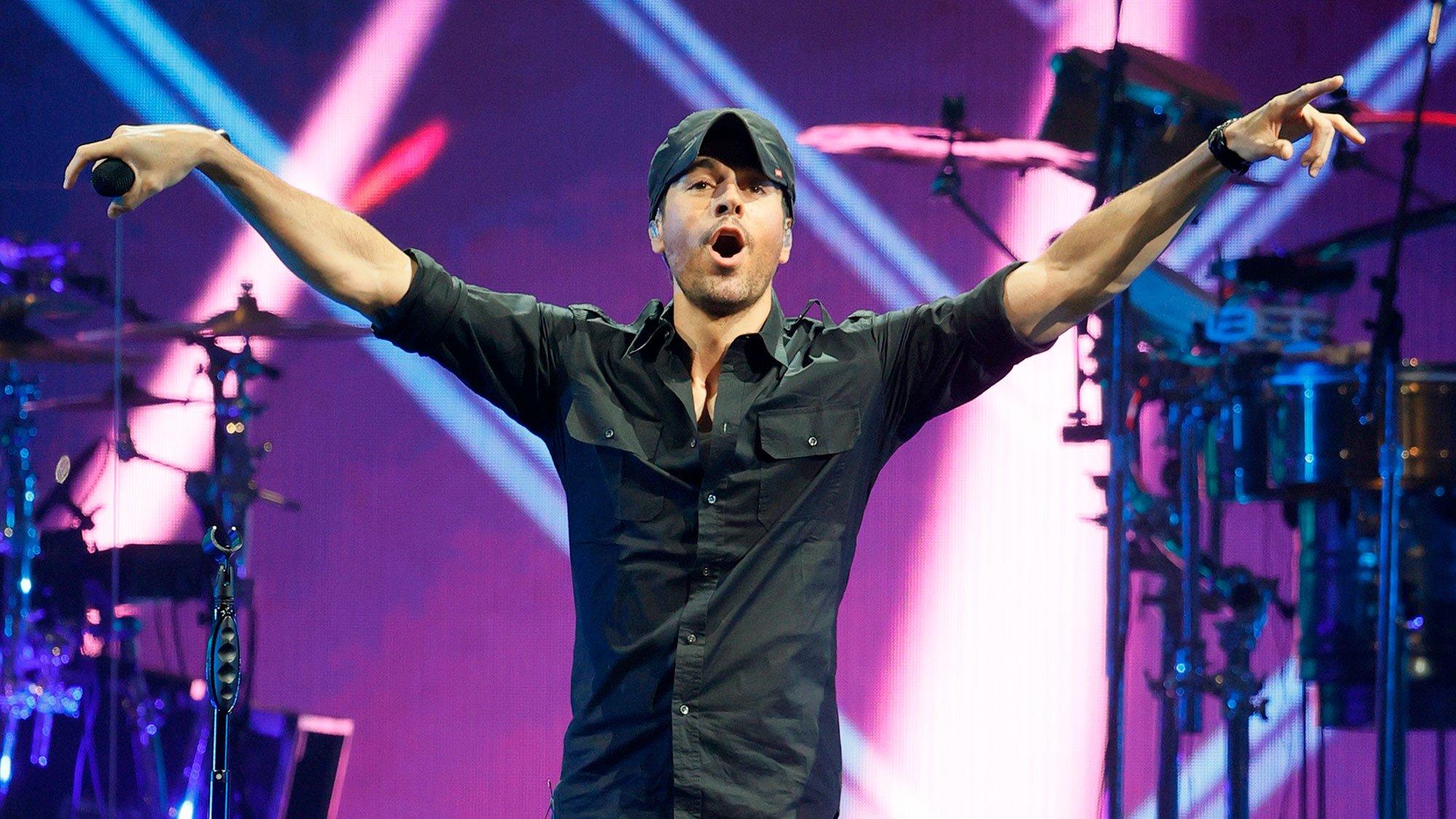
Photo: Ethan Miller/Getty Images
list
Enrique Iglesias Forever: 10 Songs That Prove He's A Latin Pop Hero
Ahead of what might be his final album — 'Final (Vol. 2),' out March 29 — celebrate Enrique Iglesias' legacy of groundbreaking Latin pop with 10 tracks of heartbreak, sensuality and dancefloor bangers.
Latin music has gone global and Enrique Iglesias is one of the superstars who laid the foundation for that crossover. The Spanish pop icon's music career spans four decades of hits both in his native tongue and in English. Following his reign as Billboard’s Greatest Latin Artist of All-Time, Iglesias marks the end of an era with the last album of his career, Final Vol. 2.
Iglesias followed in the footsteps of his father, singer/songwriter Julio Iglesias, and made his own debut in the 1990s with Spanish-language love songs. He began singing in English at the end of the decade, and subsequently led an explosion of interest in Latin pop alongside acts like Ricky Martin, Jennifer Lopez, and later Shakira.
As of writing, Iglesias has a record-breaking 27 No. 1 singles on Billboard's Hot Latin Songs chart, and solidified himself as a global heartthrob with an allure that defies language barriers. For his efforts, Iglesias has won one GRAMMY and five Latin GRAMMY Awards.
Enrique Iglesias will release what will likely be his final album on March 29, aptly titled Final (Vol. 2). Ahead of his final bow, here are 10 tracks that celebrate Iglesias' legacy in Latin music.
"Experiencia Religiosa" (1995)
Iglesias made his debut in 1995 with a self-titled first album. Among the ballads on the10-track LP, the otherworldly "Experiencia Religiosa" best demonstrates the power of his charm.
Backed by the piano with elements of gospel music, Iglesias belts his heart out about a night of passion that felt like spiritual awakening. To capture the energy of the sparks flying, an electric guitar solo rounded out his soulful yet sexy sermon. Iglesias demonstrated his knack for seamlessly blending together romance and sex appeal, which would go on to define his artistry and style.
Enrique Iglesias earned the singer his first golden gramophone at the 39th GRAMMY Awards for Best Latin Pop Performance.
"Nunca Te Olvidaré" (1997)
Iglesias proved that he was here to stay with his third album, 1997's Cosas Del Amor. The LP includes one of his signature love songs, "Nunca Te Olvidaré."
Iglesias' voice reached angelic highs in the Spanish-language power ballad, which details romance that left a lasting impression. No matter what happened, the love Iglesias shared with that person couldn't be forgotten — much like his impact on the Latin pop explosion that was brewing.
"Bailamos" (1999)
Proving he was so much bigger than the Iglesias last name, he crossed over into the English-language market with his 1999 album Enrique. Iglesias became a global Latin pop heartthrob with the sultry club banger "Bailamos." The song was featured on the Wild Wild West soundtrack, after Will Smith personally invited Iglesias to contribute music to the project.
Backed by the strum of the Spanish guitar with alluring synths, he invited the world to dance with him in English and Spanish. In a major moment for Latin acts at the time, the song topped the all-genre Billboard Hot 100 chart. The massive success of the song led Iglesias to sign with Interscope Records, where he released his breakthrough album.
"Could I Have This Kiss Forever" (1999)
One of the underrated gems on Iglesias' Enrique album is his collaboration with six-time GRAMMY-winner Whitney Houston.
The late pop legend joined forces with him for the sensual "Could I Have This Kiss Forever," making worlds collide with an irresistible mix of Latin percussion, Spanish guitar, and R&B. Houston also sang a bit in Spanish with Iglesias. His dreamy duet with Houston (who also sings in Spanish) broke down barriers for collaborations between Latin and English-language pop acts. In the years that followed, he collaborated with superstars like Kelis, Ciara, and Usher.
"Hero" (2001)
Iglesias' love songs in English touched the hearts of millions around the world. One of his enduring classics is the empowering "Hero" from his 2001 album Escape.
The beautiful ballad was released in both English and Spanish. In one of most tender vocal performances, Iglesias serenades his lover with sweet lyrics about always being by her side. After the song impressively peaked at No. 3 on Billboard's Hot 100 chart, Iglesias proved that his star power was here to stay.
The song also became an anthem of hope for the U.S. following the Sept. 11 attacks, and Iglesias was invited to perform "Hero" for the broadcast special "America: A Tribute to Heroes."
"Bailando" (2014)
After laying the foundation for the globalization of Latin music, Iglesias enjoyed one of his greatest career triumphs in 2014 — in both Spanish and English.
The feel-good smash "Bailando" blended Caribbean rhythms with flamenco influences, bringing together Sean Paul and Cuba's Descemer Bueno and Gente De Zona. The Spanglish banger peaked at No. 12 on the Billboard Hot 100 chart. At the 2014 Latin GRAMMYs, Iglesias and his collaborators took home golden gramophones for Song Of The Year, Best Urban Performance, and Best Urban Song.
The success of the song also helped usher in the reggaeton music revival of the last decade. Pop and reggaeton collaborations became more commonplace with songs like "Despacito" by Luis Fonsi and Daddy Yankee and J Balvin’s "Mi Gente" remix with Beyoncé later following suit.
"Beautiful" (2014)
Iglesias joined forces with GRAMMY-winning dance-pop icon Kylie Minogue for "Beautiful," a haunting love song about a formidable romance that could withstand the apocalypse.
The electronic ballad was co-produced by Mark Taylor, who was also at the helm of Iglesias' collaboration with Houston. Iglesias and Minogue's voices melted together in a hypnotic harmony that made this song live up to its name. The song was included on Minogue’s Kiss Me Once album and deluxe edition of Iglesias’ Sex and Love LP.
"El Baño" (2018)
Before he became a GRAMMY-winning global star, Puerto Rican singer Bad Bunny teamed up with Iglesias for a freaky reggaeton romp, "El Baño."
Iglesias first turned up the heat by singing about getting intimate with his lover in the restroom. Bad Bunny dropped in that halfway point as his wingman with a fiery guest verse. The hypnotic collaboration was included on Iglesias' penultimate album Final (Vol. 1).
Iglesias later added a woman’s perspective to the song, bringing on Dominican reggaeton star Natti Natasha joining them on the remix. As one of Latin pop’s most daring artists, he was never afraid to push boundaries with his risque tracks.
"Space In My Heart" (2024)
After the release of his reggaeton-heavy Final (Vol. 1), Iglesias was ready to be more adventurous with the music that followed. In 2022, Iglesias ventured into country music for the first time with "Espacio En Tu Corazón."
To bring some more authenticity to the English-language version of the song, "Space In My Heart," Iglesias teamed up with GRAMMY-winning country star Miranda Lambert. The breathtaking country-pop ballad features Iglesias and Lambert singing passionately about winning over the hearts of their crushes.
The song is a highlight on the last album of his career, Final (Vol. 2). And while it seems like this may be the singer's final hurrah, Iglesias told PEOPLE in 2021: "No, I'm never gonna retire! I'm gonna keep on writing songs but that doesn't mean I need to be putting out albums every so often."
"Fría" (2024)
Iglesias is going out in style with "Fría." For the most vibrant song on Final Vol. 2, Iglesias collaborates with Cuban singer/songwriter Yotuel on a frisky and refreshing banger, which blends reggaeton beats with elements of tropical music.
Iglesias sounds like he's having a blast with Yotuel as they try to convince their partners there was no infidelity at last night's wild party. "I just went out for a cold one," Iglesias winkingly sings in Spanish. Cheers to the legacy of one of Latin pop's greater stars.
10 Women Artists Leading A Latin Pop Revolution: Kenia Os, Belinda & More

Photo: 5020 Records
interview
Inside Residente's 'Las Letras Ya No Importan': How His New Album Shows The Rapper In Transition
"It’s an album that marks a musical transition for what’s coming for me," Residente says about his sophomore record, 'Las Letras Ya No Importan.'
Puerto Rican rapper Residente wants to embark on new adventures.
The artist born René Pérez Joglar has dreams of directing movies and acting, writing books, and making for pleasure — not to pay the bills. These goals reflect a new attitude, one resulting from time spent reflecting on the passage of time and the presence of death.
Residente's sophomore album, Las Letras Ya No Importan (Lyrics No Longer Matter), echoes this transitory period. An extensive body of work, featuring 23 tracks, with several songs surpassing the five-minute mark. Las Letras is an act of deeply intimate rebellion.
"It’s a very personal album, and I sought to connect with myself in many moments throughout," Residente tells GRAMMY.com.
While Las Letras explores topics already a hallmark of his music — the music industry, political systems, Puerto Rico — it's also exceedingly vulnerable. The 28-time Latin GRAMMY and four-time GRAMMY winner opens up about depression and personal relationships, and confronts mortality.
Lead single "313" is inspired by Residente's late friend Valentina, whose voice appears in the first interlude. As Residente recounted to El País of Spain and GQ Spain, Valentina was a violist, and the last messages they exchanged on WhatsApp were at 3:13.
The song begins with a French verse, fulfilling Valentina’s wish, expressed in the first interlude, to do something in that language. "Les paroles n'ont pas d'importance," (words no longer matter), a female voice whispers, followed by a spectacular string arrangement.
Residente revisited older works during this period of creative transition, and the record features previously released tracks "René," "This Is America," and "Quiero Ser Baladista."
Las Letras Ya No Importan features many collaborations, with actress Penélope Cruz, Spanish singer Silvia Pérez Cruz, Rauw Alejandro, Ricky Martin, Christian Nodal, Arcángel, Jessie Reyez and others making appearances. Hip-hop icon Busta Rhymes is featured on "Cerebro," while Big Daddy Kane makes an appearance on "Estilo Libre" with Vico C.
GRAMMY.com spoke with Residente via Zoom about the process that led him to his second album, the symbolism behind "313" and the artistic connection to Spain.
This interview has been edited for length and clarity.
What inspired you to create Las Letras Ya No Importan?
It’s an album that marks a musical transition for what’s coming for me. It feels diverse; it also has songs with which I may not feel as connected [to] now because several years have passed since I made them. There are newer songs with which I do connect, which have a bit more to do with the way I want to start working on my music in the future.
"René" is part of this album, even though it came out four years ago. This is an album I was going to release during the pandemic.
We have "René," which is very personal; we have "313," which I also feel is personal; then "Ron en el piso," [a song about the passage] of time, the collaboration with Nodal ("Pólvora de Ayer") also touches on the theme of time, of enjoying everything.
You confront death in several songs. In "René," you sang about losing a friend; in "Ron en el piso," you see your funeral; and in "313," you draw inspiration from your late friend Valentina. What is it about death that inspires you?
It’s something I’ve been going through in recent years. I lost many people I love, and it made me much more reflective when it comes to understanding time, the things I want to do, and the things I’ve stopped doing.
That’s why I’m also transitioning to cinema. I’ve always wanted to make films, directing, being behind the scenes, not being on stage. I’m crazy about dedicating myself entirely to that.
I discovered acting now in a movie I starred in [In the Summers] that won the Jury Award at Sundance. When I saw it, I didn’t know I was the protagonist until I watched it. [The film] encouraged me to follow that too, and I’m going to want to act, direct; I want to dedicate myself to that for a while fully.
The album has a lot of life, and even though the lyrics no longer matter, you still have much to tell. You already said the album is very personal, but how would you describe it?
I can describe it in two years, not right now. It’s transitional. That’s what happened with Calle 13; everything was a musical and lyrical change from the second album onwards.
Residente represented a fusion of world music and rap. Now, in this one, I’m using a lot of strings, cellos, and double bass. I’m going to experiment a lot with different instruments in different ways. I’m going to be creative without the need to balance the album.
What’s coming next doesn’t have that artistic pressure. The only artistic pressure I want to have is to do the highest I can, which happens organically, not feeling pressured but naturally.
I want to do art as I did in college [at Savannah College of Art and Design]. I was never thinking about people or trying to convince anyone, and I was completely free, and that’s what happened with "313." I had the freedom I always wanted to have.
There’s substantial symbolism in "313," from the faceless dancers, the color pink. What was your vision with the visuals?
The dancers represent time. Penélope [Cruz] can represent many things, from life to Valentina, my friend, who inspired me to make the song. Penélope controls me, holds me, flies me, brings me back, and then I decide to control my life and time. That’s why I raise my hands, and everyone raises them, and time is running out, and then you see a sunset.
Sunset marks the end of something. The colors of the costumes also have some dusk elements. You can see at the end when I’m disappearing; it fades and blends with the end of the sunset.
These are decisions I make that are both aesthetic and technical. I put masks on the dancers because I liked it aesthetically. It also helped me speed up the process with makeup. I had to find creative ways to maintain the video’s aesthetics and make everything more agile because in filming, everything is time, and I had little of it.
What’s the idea behind the song "Las Letras Ya No Importan?"The arrangement is magical, with a numerical sequence from one to eight in different languages and a voice spelling of the alphabet.
That was the initial track. Before "313," I had this idea that I dreamed of with some basic notes, and it turned into something big.
There’s a voiceover of Penélope [Cruz] that says that we were eight [people in the studio], we are on an 8th street in New York, in studio B, which, if you look at it, it resembles the number 8. Everything connected with eight and [that number] also at a time level can mark infinity. So, I connected all that with the immensity of letters and languages. That piece’s runtime is five minutes. I think it’s pleasurable. I like that music, which resembles what I want to do.
Leo Genovese, an excellent musician and musical genius, made the arrangements. I greatly respect him.
In "Cerebro," you showcase your skill and vocal speed; what was it like collaborating with Busta Rhymes, whose own flow is iconic?
We met, and he loved the concept of what I was working on. He was a very humble, good person to me. After we met in person and talked for a while, he went to write after I sent him everything I had written in English.
I created ["Cerebro"] a while ago…. That’s why I tell you that the album has several concepts that I had to let go of because it was too much, and a lot of time had passed. I had a previous concept when I released the song "René" [in 2020], which is why it’s on the album. [At that time] I was working with the brain waves of different animals and people, and I made music with those brain waves.
This song ["Cerebro"] is part of that, and that’s why it’s called "Cerebro." The album was originally going to go that route. Then I didn’t do it; maybe I’ll connect to it in the future because I loved that idea.
What has Spain meant to you? The country has been so prominent in the trailers you’ve released and in the collaborations in your latest songs.
I've been making frequent trips to Madrid. This past year, I was there a lot; I was more in Madrid than at home. I traveled, wrote, and filmed videos like "Problema cabrón" and "313."
I grew up with Spanish cinema by Almodovar and a bunch of directors I admire, and I wanted to collaborate with the actors I grew up watching in movies.
This album has many personal elements, and cinema is very intimate for me. I saw [Penelope Cruz] in [the movie] Abre los ojos when I was a kid; working with her now is a dream. The same goes with Javier Cámara and Najwa (Nimri) [who is in the film] Lovers of the Arctic Circle by Julio Medem. I saw all these people, and now being able to collaborate with them, be friends with them, talk to them is a dream. Everything is very connected to my life.
Erick The Architect Steps Into A New World On 'I’ve Never Been Here Before'
